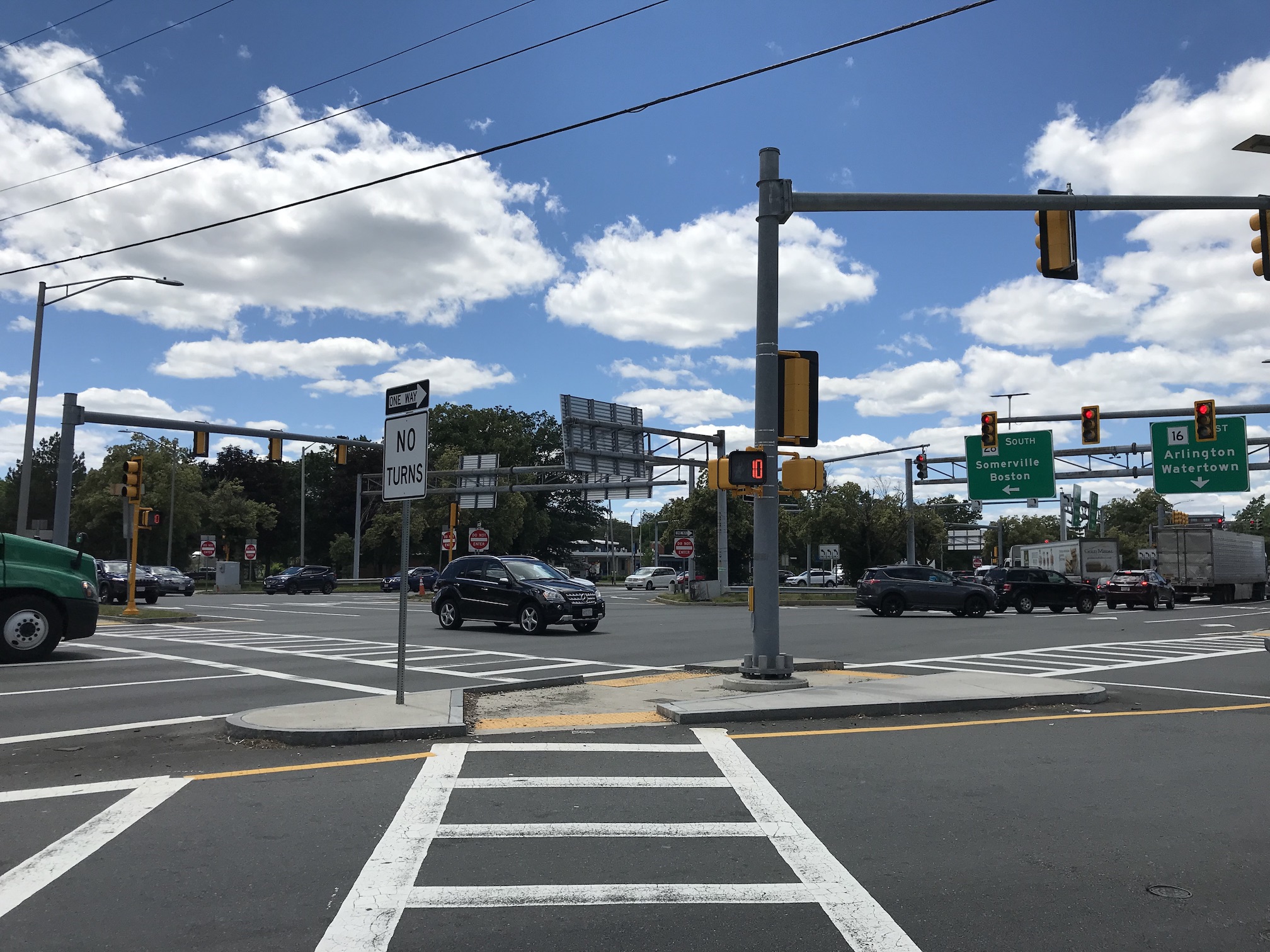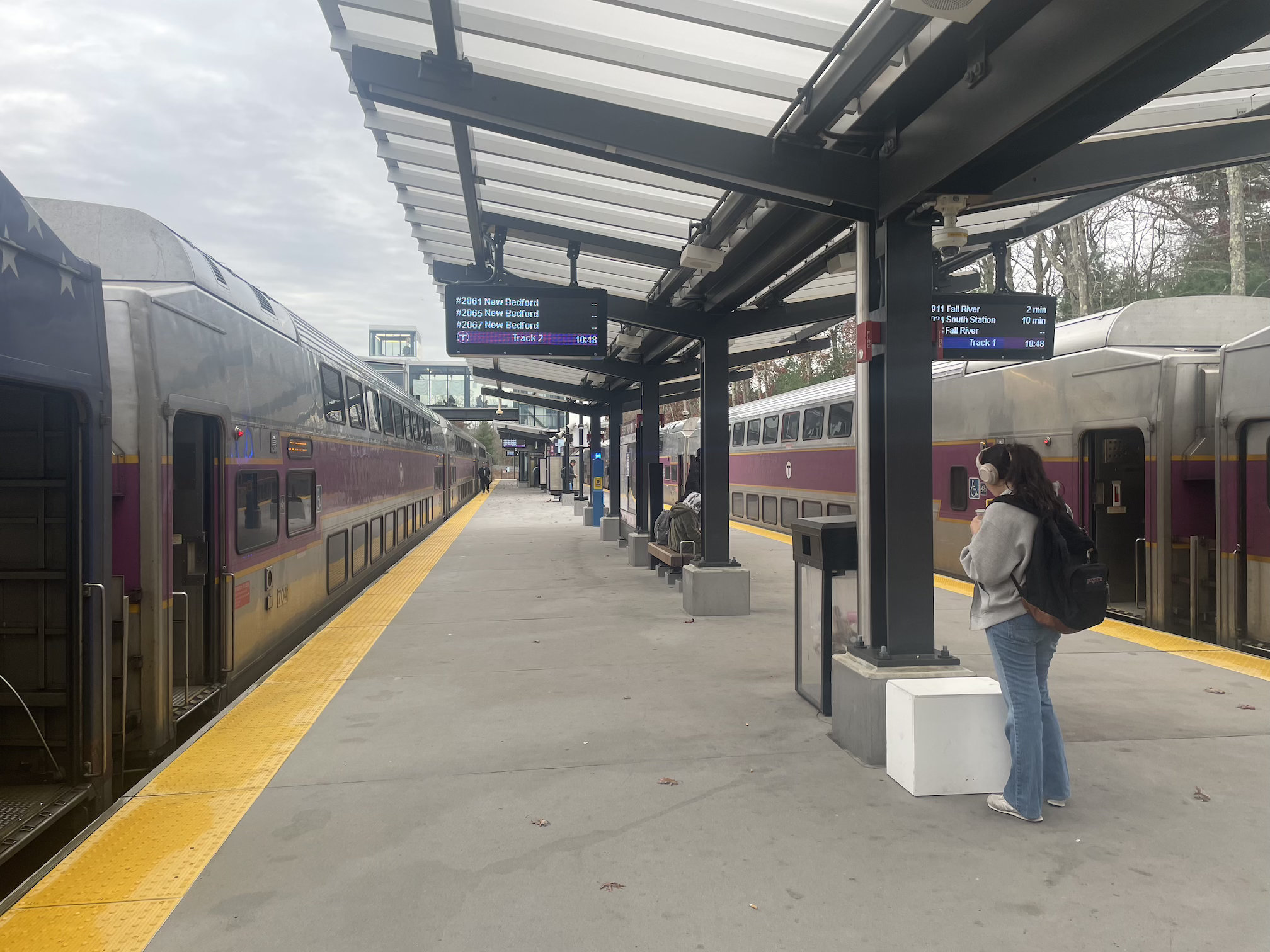MassDOT is soliciting ideas for improving bike, bus, and pedestrian access through Wellington Circle, the daunting knot of highways that snarls traffic and blocks foot traffic on the north bank of the Mystic River in Medford near a busy MBTA Orange Line station.
The study, which was funded in part by the Encore Casino as mitigation for increased travel demand on the north bank of the Mystic River, will eventually produce conceptual plans for an overhaul of the area's roadways, with an eye toward reducing traffic congestion and improving conditions for bike riders, transit users, and pedestrians.
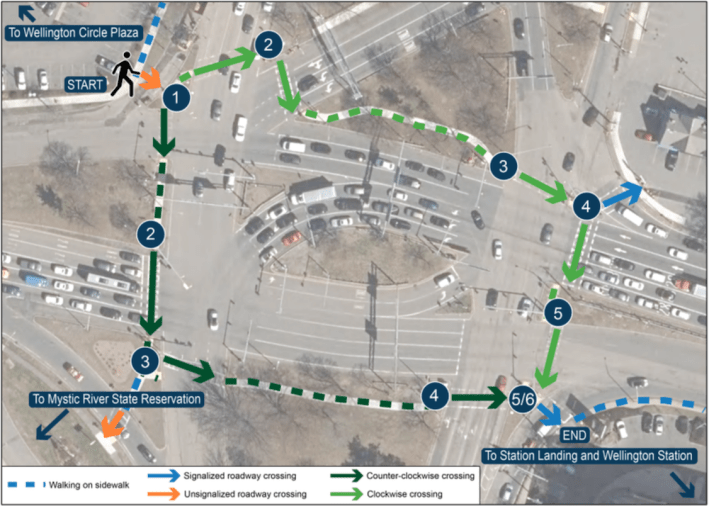
Wellington Circle's 1960s-vintage design is increasingly out-of-sync with its surroundings, which are attracting more transit-oriented development along the Orange Line. Though few people make the trip, the Circle is a 15-minute walk or 6-minute bike ride from Somerville's Assembly district, and the cities of Medford and Somerville recently made the ride across the river easier for bike riders with new flexpost-protected bike lanes on the Fellsway, which connect waterfront paths on both sides of the river:

On the north bank of the river, a transit-oriented mixed-use district called Station Landing, which surrounds a large park-and-ride garage for the Wellington Orange Line station, has been built in stages over the last two decades.
But that development, and Medford's only rapid transit station, remain utterly cut off from the rest of the city by the high-speed traffic of the Fellsway and Revere Beach Parkway, and by Wellington Circle itself.
Interestingly, in spite of the fact that the station is surrounded by massive park-and-ride lots, surveys of Wellington's Orange Line passengers show that an increasing majority rely on MBTA buses to get to the station.
Only 18 percent of the station's riders use the station's park-and-ride lots, which bury six acres of publicly-owned, riverfront real estate under asphalt.
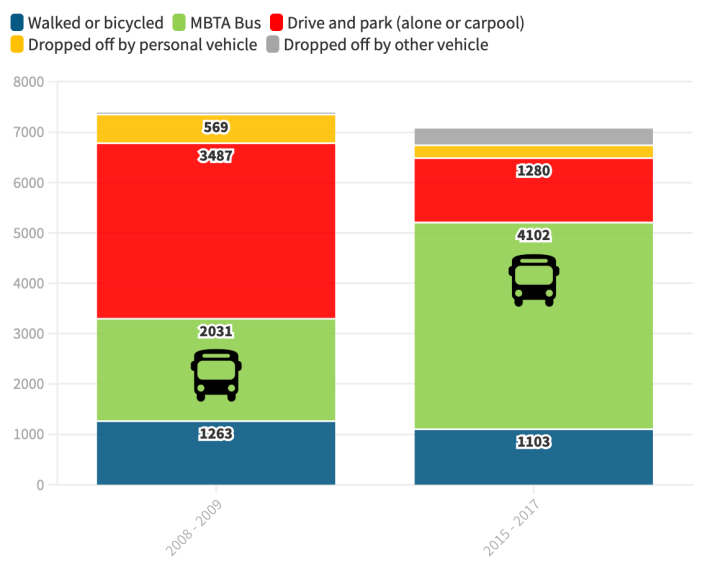
The study team has also found that traffic congestion on the Revere Beach Parkway – which numerous bus routes use to access Wellington Station – is a significant source of delay and unreliability for thousands of transit riders.
The section of Revere Beach Parkway adjacent to Wellington station, just east of Wellington Circle, was recently rebuilt and widened with two new bridges over the Orange Line and Malden River.
Though that project made gestures to accommodate bikes and pedestrians with widened sidewalks and painted bike lanes, few people use those facilities, which aren't buffered from the adjacent highway lanes, lack shade, and also require multiple crossings of on- and off-ramps that were designed to let cars and trucks merge on or off the highway without stopping:
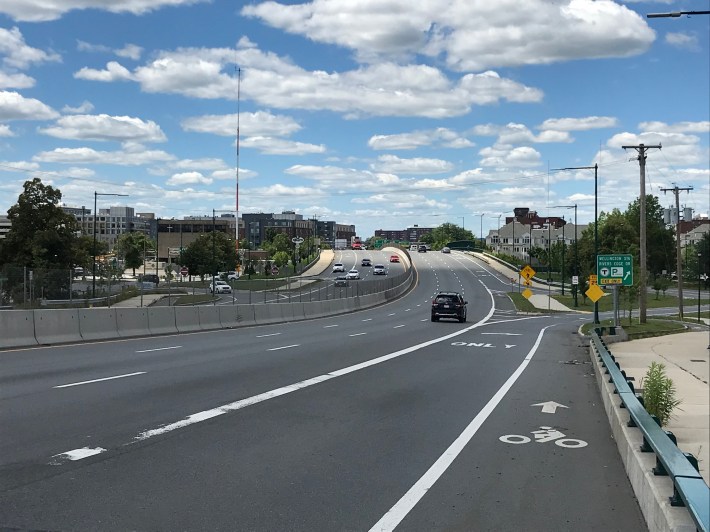
"It's a very difficult area to travel through on a bike, or to walk through," admitted Gary McNaughton, a study consultant, during MassDOT's first informational public meeting for the study on June 29. "It's not an area that you're going to feel comfortable in almost anything other than a motor vehicle."
But study consultants think that a significant number of trips through Wellington Circle could be made on foot or by bike, if better connections were available.
"There are a lot of destinations such as transit stations, commercial centers, schools, parks... if (higher-quality) biking facilities were provided in this area, there is a good chance they would be well utilized," said Natalie Raffol, another study consultant, at the June 29 meeting.
The study team will develop conceptual alternatives for the area this summer and fall, and expects to issue recommendations next spring, with at least three more virtual public engagement sessions.
For now, the study team is soliciting online feedback about the area with an interactive website that reviews the study's finding so far and invites feedback on an interactive map.
That website will be active until July 8, and according to a project timeline, a second public hearing will be held in the fall to review conceptual alternatives.
Recordings of study meetings, including the June 29 virtual public meeting, have also been posted on the study website: mass.gov/wellington-circle-study.
